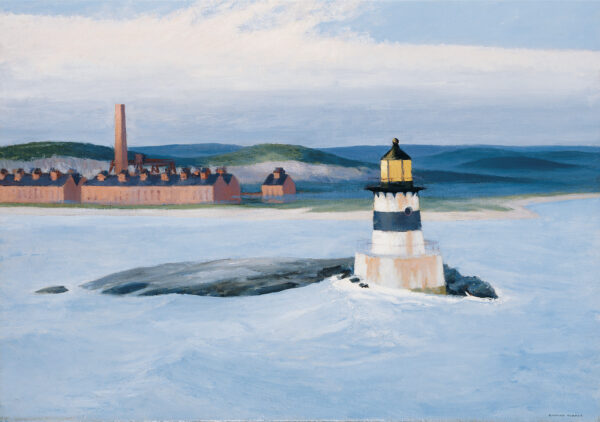
5 A. M.
Hopper, Edward
1937
Artwork Information
-
Title:
5 A. M.
-
Artist:
Hopper, Edward
-
Artist Bio:
American, 1882–1967
-
Date:
1937
-
Medium:
Oil on canvas
-
Dimensions:
25 1/8 x 36 1/8 in.
-
Credit Line:
Wichita Art Museum, Roland P. Murdock Collection
-
Object Number:
M4.39
-
Display:
Not Currently on Display
About the Artwork
Edward Hopper (1882-1967)
5 A.M., 1937
Oil on canvas
25 ⅛ x 36 ⅛ in.(63.8 x 91.8 cm)
Signed lower right: EDWARD HOPPER
Wichita Art Museum, Roland P. Murdock Collection
M4.39
Edward Hopper is one of the icons of American art, recognized internationally as a 20th century master and as the “quintessential Yankee.” Fellow artist Guy Pиne du Bois, who used the latter phrase in an early critical essay about Hopper, meant to characterize both the man and his art. Hopper’s admirers praised his quotidian subject matter, directness of observation, and his unstinting adherence to a native vision cleansed of European flavor. By 1937 the artist had already established the style and themes that were to mark his life’s work. Hopper developed a laconic, subtractive realism that emphasized elemental mass and directional light. With these spare means he translated specific data of New York City venues, rural and urban architecture, the New England seacoast, and solitary couples into metaphors of modern life.
Hopper composed the painting 5 A.M. from his memory of ferry boat rides taken from Long Island Sound up to Boston and back to Manhattan, synthesizing details of lighthouse, factory, and coastal landscape so as to awaken the viewer’s own primal memory of similar experience. Hopper realized the surface of the sea as he describes all other surfaces, that is, with slow, studied strokes of opaque paint, a technique that suggested heavily moving, truculent matter rather than free flowing liquid. Ironically, but typical of the artist, Hopper reserved his most tender touch for the least aesthetic detail, the red brick factory buildings and smoke towers, upon which he carefully, sweetly, played notes of rose and gold-toned dawn.
The image 5 A.M., like its title, is at once a blunt, objective statement and a signpost evocative of luxuriant subjectivity–a silent, meditative drifting in the momentary transition from sleeping to waking. The painting affirms the critical assessment of Hopper as an artist who employed classical form in the service of romantic feeling. In his twentieth century interpretations of America’s Atlantic sea lanes, Hopper enlarged upon the Romantic legacy of meditative seascapes invested with a sense of unnamable yearning, and brooding intimations of the infinite and the unknown.
The acquisition of 5 A.M. in 1939, still a relatively early period in museum acquisitions not only of Hopper’s work, but also of contemporary American art in general, distinguished the Wichita Art Museum as an a serious, progressive institution. The purchase also prompted Edward Hopper and his wife Josephine Nivison to pay a call on the Wichita Art Museum in 1941 on their first cross-country road trip.